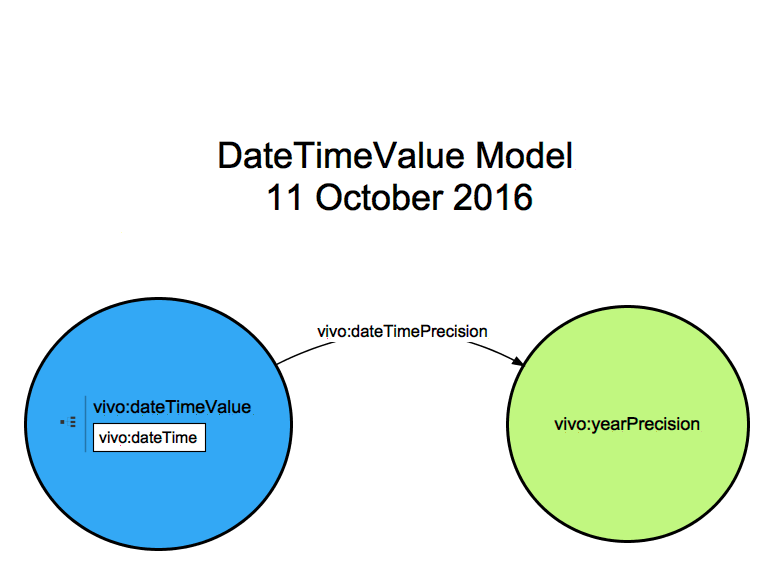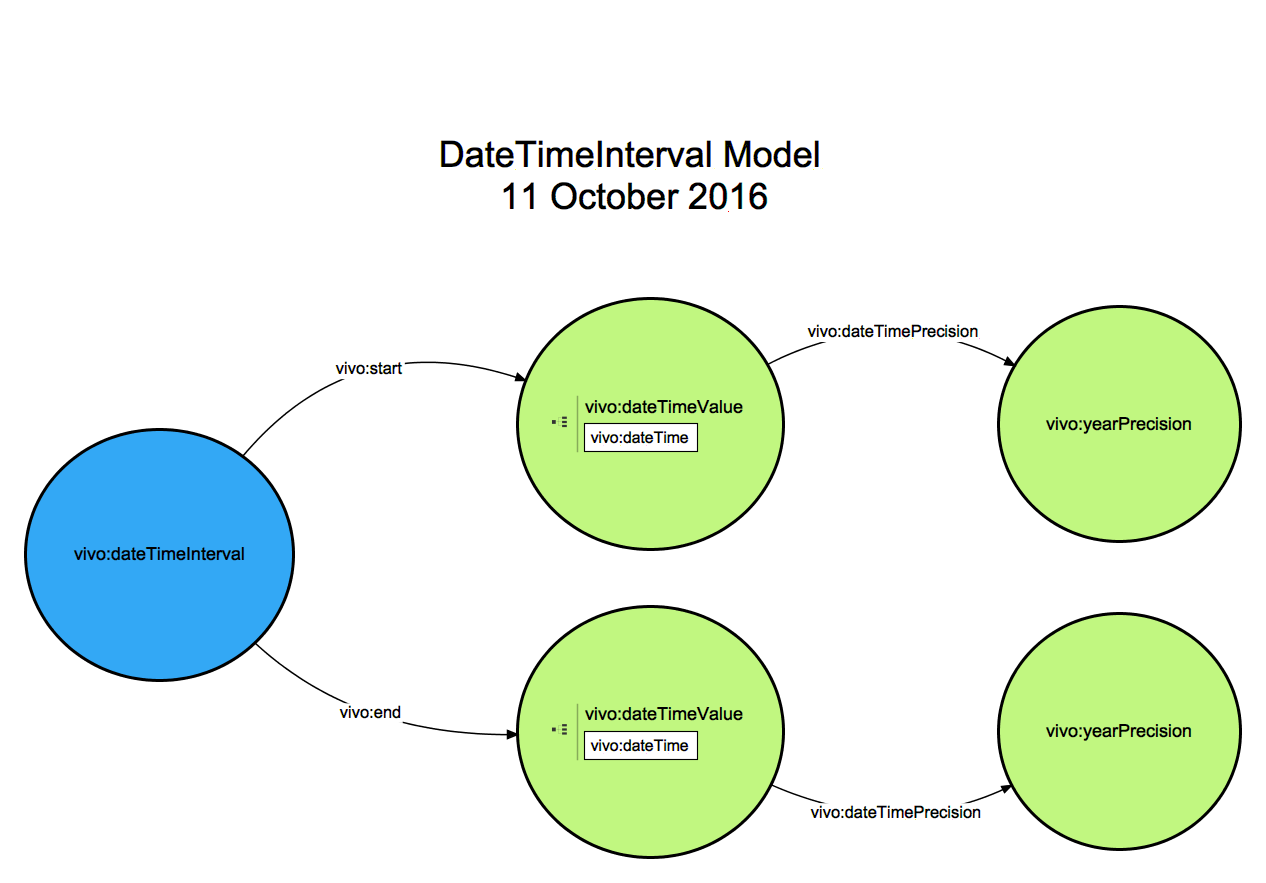
The model indicates that creating a DateTimeValue requires three triples – one to specify the type, one to specify the literal value of the datetime, and one to indicate the precision.
<http://vivo.myschool.edu/individual/n123> rdf:type vivo:DateTimeValue . <http://vivo.myschool.edu/individual/n123> vivo:dateTime "2010-11-12T12:00:00"^^xsd:datetime . <http://vivo.myschool.edu/individual/n123> vivo:dateTimePrecision vivo:yearPrecision . |
<http://vivoweb.org/ontology/core#yearMonthDayTimePrecision><http://vivoweb.org/ontology/core#yearMonthPrecision><http://vivoweb.org/ontology/core#yearPrecision><http://vivoweb.org/ontology/core#yearMonthDayPrecision>
The DateTimeInterval is an entity that references one or two DateTimeValues. Either reference could be missing. An interval might have a start date and no end date, for example. To create a DateTimeValue with a start and end takes the statements below, where the start and end objects exist and have the URI as shown.
<http://vivo.mydomain.edu/individual/n456> rdf:type vivo:DateTimeInterval . <http://vivo.mydomain.edu/individual/n456> vivo:start <http://vivo.mydomain.edu/individual/n123> . <http://vivo.mydomain.edu/individual/n456> vivo:end <http://vivo.mydomain.edu/individual/n124> . |
